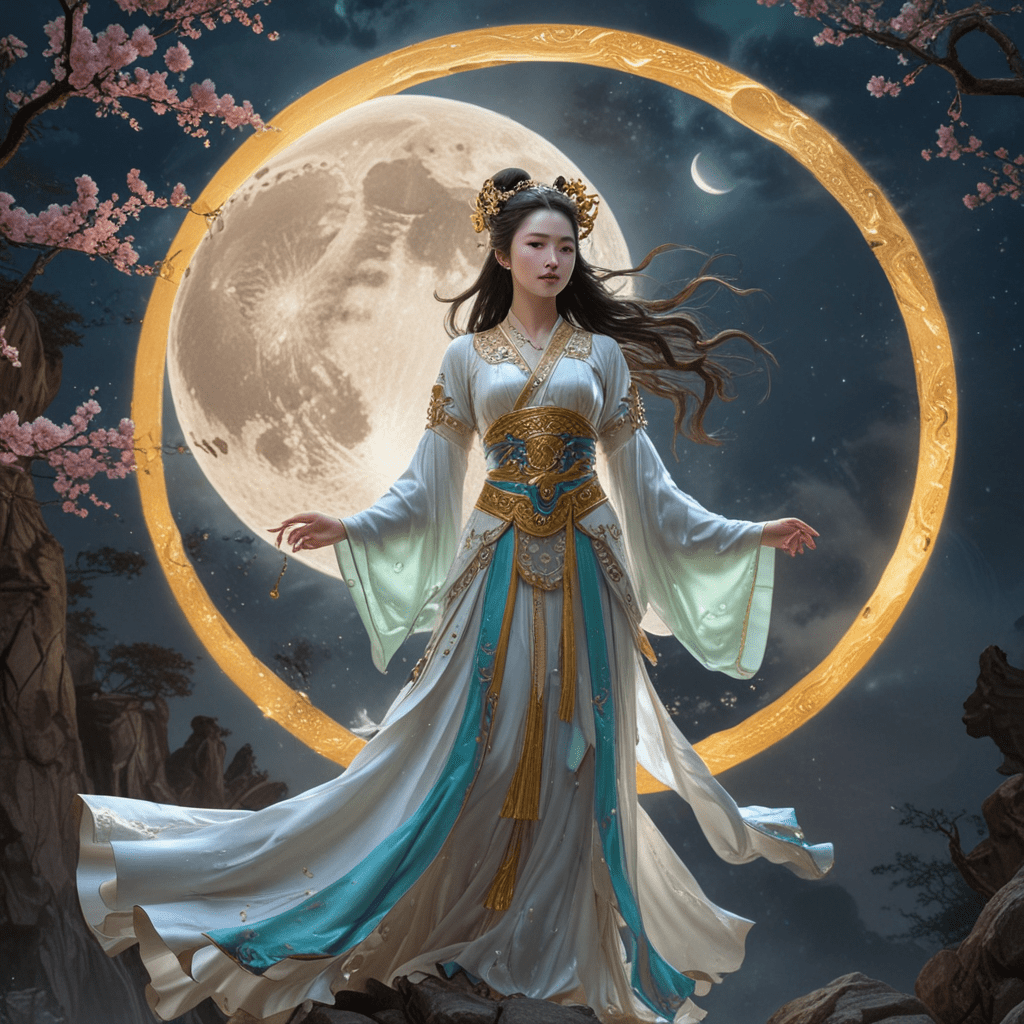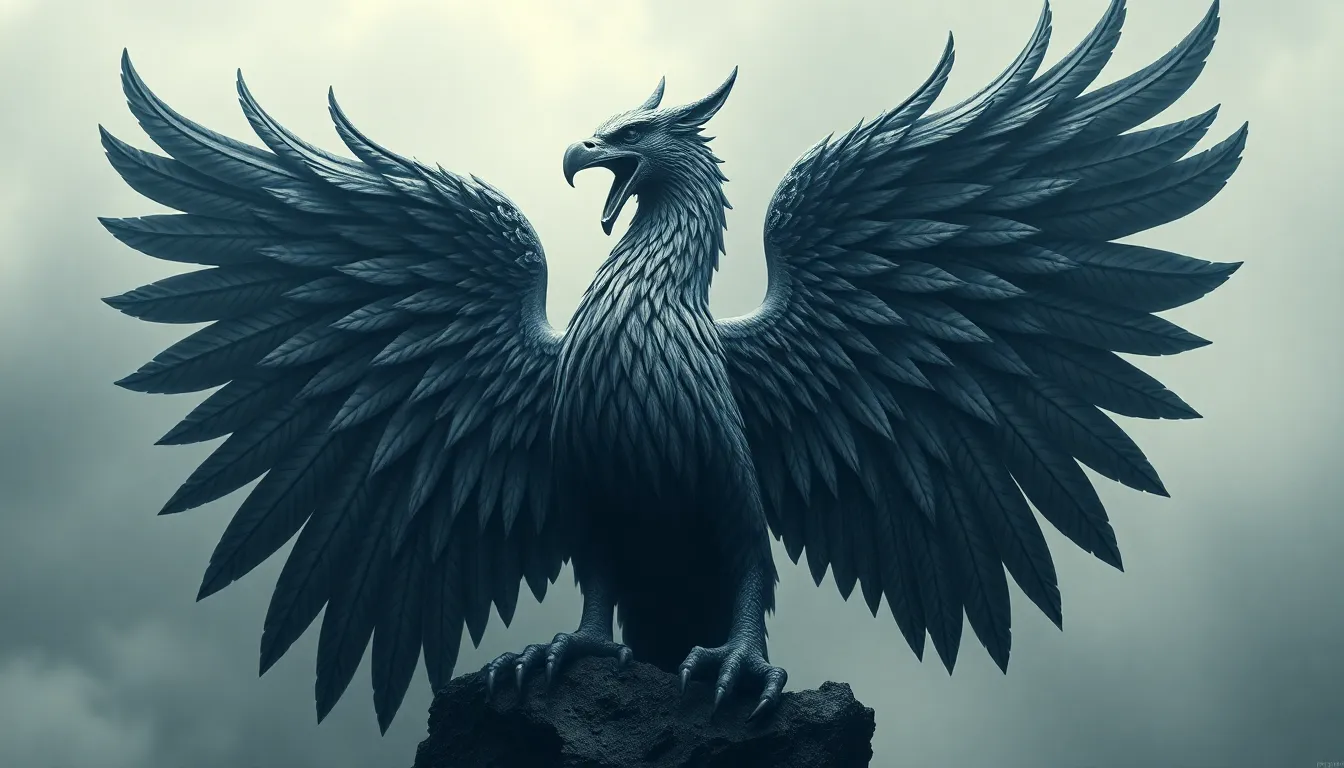The Myth of Chang’e and the Moon Goddess in Chinese Mythology
Introduction
The legend of Chang'e, the Moon Goddess, is an enchanting tale deeply rooted in Chinese folklore. This captivating myth narrates the story of an extraordinary woman who ascended to the heavens and became the celestial guardian of the Moon. Chang'e's tale transcends time and continues to enchant imaginations, leaving an enduring legacy in Chinese mythology.
Origins of the Myth
The Myth of Chang'e has ancient origins, dating back thousands of years. Its roots can be traced to the Han dynasty (206 BCE -220 CE), where it emerged as a popular legend. Over the centuries, the story has been passed down through generations, evolving and adapting while remaining true to its core elements.
The Story of Chang’e
Her Life on Earth
Chang'e was a beautiful and virtuous woman married to the skilled archer Hou Yi. The couple lived a harmonious life until a cataclysmic event occurred. Ten suns appeared in the sky, scorching the Earth and creating chaos. Hou Yi, with his unmatched archery prowess, shot down nine of the suns, restoring balance to the world.
Stealing the Elixir of Life
The Queen Mother of the West, touched by Hou Yi's heroism, bestowed upon him the elixir of immortality. However, Chang'e stumbled upon the elixir and, consumed by both curiosity and fear, drank it all.
Fleeing to the Moon
Upon drinking the elixir, Chang'e felt a surge of lightness and began to float. Despite Hou Yi's desperate pleas, she soared higher and higher, finally landing on the Moon, where she remained forever.
IV. Chang’e as the Moon Goddess
Chang'e's ascension to the heavens transformed her into the Moon Goddess, a celestial deity revered and worshiped by the Chinese people. Her image graces the Moon, and her presence is believed to influence the cycles of the Moon and the rhythms of nature. Chang'e's connection to the Moon symbolizes her purity, beauty, and otherworldly nature, making her an iconic figure in Chinese mythology.
V. The Jade Rabbit
Chang'e's solitary existence on the Moon is accompanied by a faithful companion, the Jade Rabbit. This mythical creature, often depicted as white or green, is believed to be the incarnation of a moon spirit. The Jade Rabbit is said to possess knowledge of the elixir of life and to accompany Chang'e in her immortal journey.
VI. The Mid-Autumn Festival
The Mid-Autumn Festival, also known as the Moon Festival, is a significant annual event in Chinese culture. This festival, celebrated on the 15th day of the 8th lunar month, commemorates the legend of Chang'e and her flight to the Moon. During the festival, families gather to enjoy mooncakes, lanterns, and fireworks, honoring Chang'e's legacy and celebrating the beauty of the Moon.
VII. Cultural Impact
The Myth of Chang'e has had a profound impact on Chinese culture, inspiring countless works of literature, art, and music. Poets and writers have immortalized Chang'e'e's story in verses and prose, while artists have depicted her ethereal beauty and otherworldly presence in paintings and sculptures. Chang'e's legend has also influenced traditional Chinese medicine and astronomy, with her association with the Moon and the feminine principle playing a significant role in these fields.
VIII. Variations of the Myth
Over the centuries, the Myth of Chang'e has undergone regional variations and literary interpretations. In some versions of the story, Chang'e steals the elixir of immortality from her husband, Hou Yi, to protect it from falling into the wrong hands. Other interpretations explore Chang'e's emotions and motivations, delving into the themes of love, loss, and sacrifice.
IX. Modern Adaptations
In contemporary times, the Myth of Chang'e continues to captivate audiences through modern adaptations and retellings. Films, television shows, and anime have brought Chang'e's story to a global audience, showcasing her timeless appeal and cultural significance. Pop culture references and allusions to the Myth of Chang'e further demonstrate its enduring influence in modern society.
X. Conclusion
The Myth of Chang'e and the Moon Goddess is a captivating tale that has enchanted generations of Chinese people and beyond. Chang'e's journey from a mortal woman to a celestial deity embodies themes of immortality, sacrifice, and the connection between humanity and the cosmos. Her legend has left an indelible mark on Chinese culture, inspiring art, literature, and traditions that continue to celebrate her enduring legacy.
Frequently Asked Questions (FAQs)
Who is Chang’e?
Chang'e is the Moon Goddess in Chinese mythology, known for her beauty, purity, and connection to the Moon.
How did Chang’e become the Moon Goddess?
Chang'e drank the elixir of immortality, which caused her to float to the Moon, where she became the Moon Goddess.
Who is the Jade Rabbit?
The Jade Rabbit is Chang'e's companion on the Moon, a mythical creature believed to possess knowledge of the elixir of life.
What is the Mid-Autumn Festival?
The Mid-Autumn Festival is a Chinese festival that commemorates the legend of Chang'e and her flight to the Moon, celebrated with mooncakes, lanterns, and fireworks.
How has the Myth of Chang’e influenced Chinese culture?
The Myth of Chang'e has inspired countless works of literature, art, and music, and has played a significant role in traditional Chinese medicine and astronomy.



